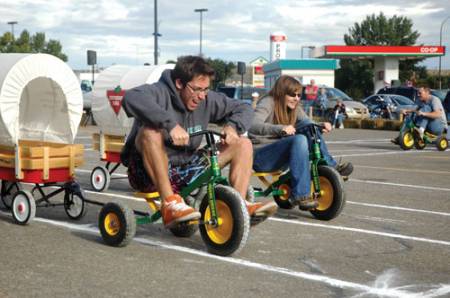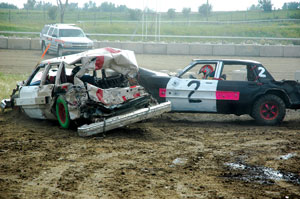
Tower Trophy’s Brian Whiffen-Peters gave his all in the final stretch of the Mini-chucks for Charity heat against Canadian Tire volunteer racer Jen Bancescu on Friday morning at Greentree Mall. Bancescu went on to become champion, winning $2,250 to be donated to the charity of Canadian Tire’s choice.


















